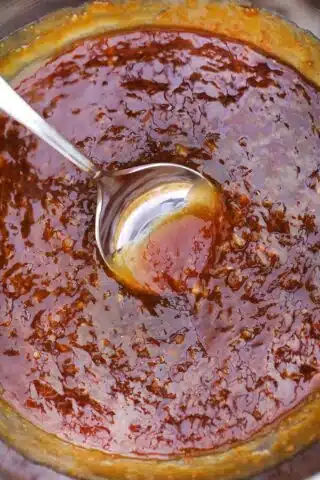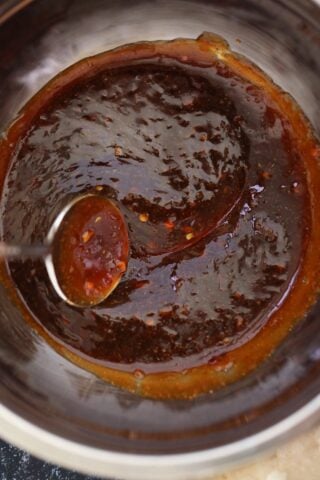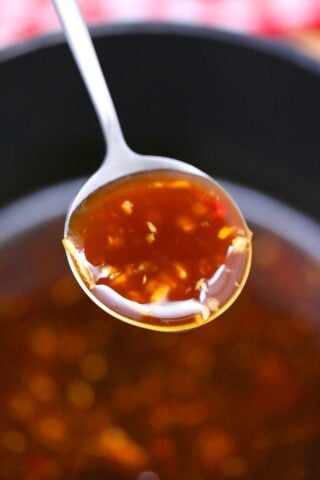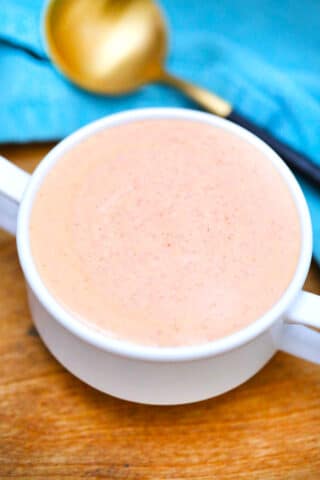General Tso Sauce Recipe
This General Tso Sauce is rich, sweet, and spicy, making it perfect for all your favorite stir-fry dishes. Once I learned how to make it at home, it completely changed the way I cook. I use it for marinating meat or tofu, and even as a dip. The first time I tasted it, I was completely hooked. And yes, you can make it too in just 10 minutes. This homemade version truly puts any takeout or store-bought sauce to shame.
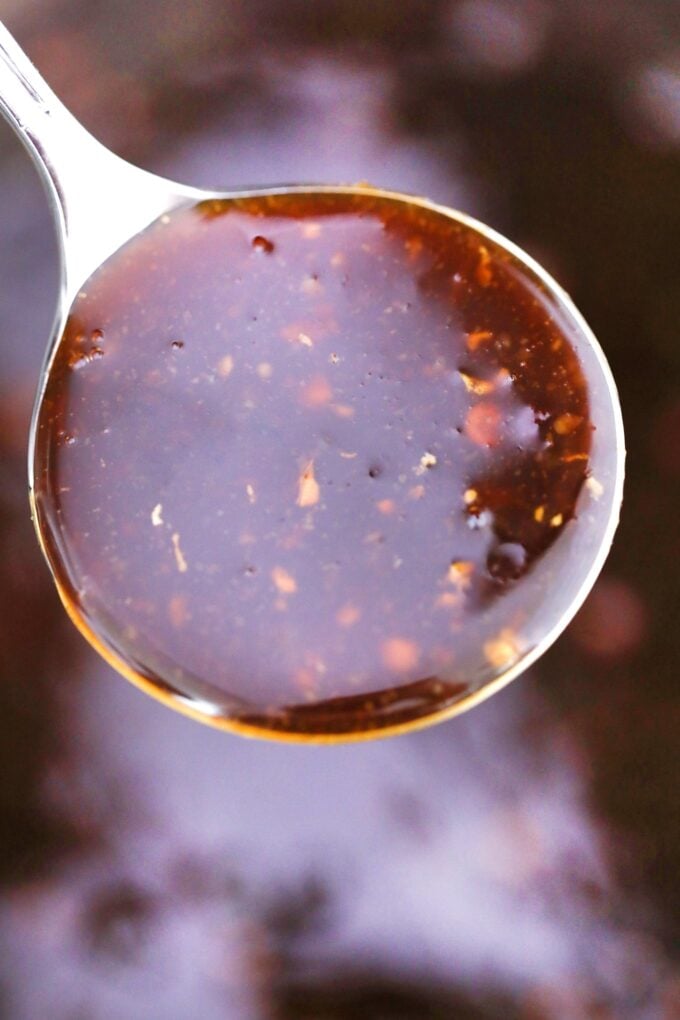
General Tso sauce is incredibly popular, and you’ll almost always see General Tso Chicken on every Chinese takeout menu. So the next time you’re craving takeout, skip the delivery and make it at home instead! I promise, it’s quicker, tastier, and so satisfying, especially if you’re using my homemade General Tso sauce recipe.
Table of contents
As someone who cooks for a living, I’ve learned a few shortcuts that really come in handy and save time in the kitchen. Hear me out, any recipe can turn out bland, even if you’re using the best ingredients. That’s why flavor matters so much. Having a few good sauce recipes up your sleeve can make all the difference.
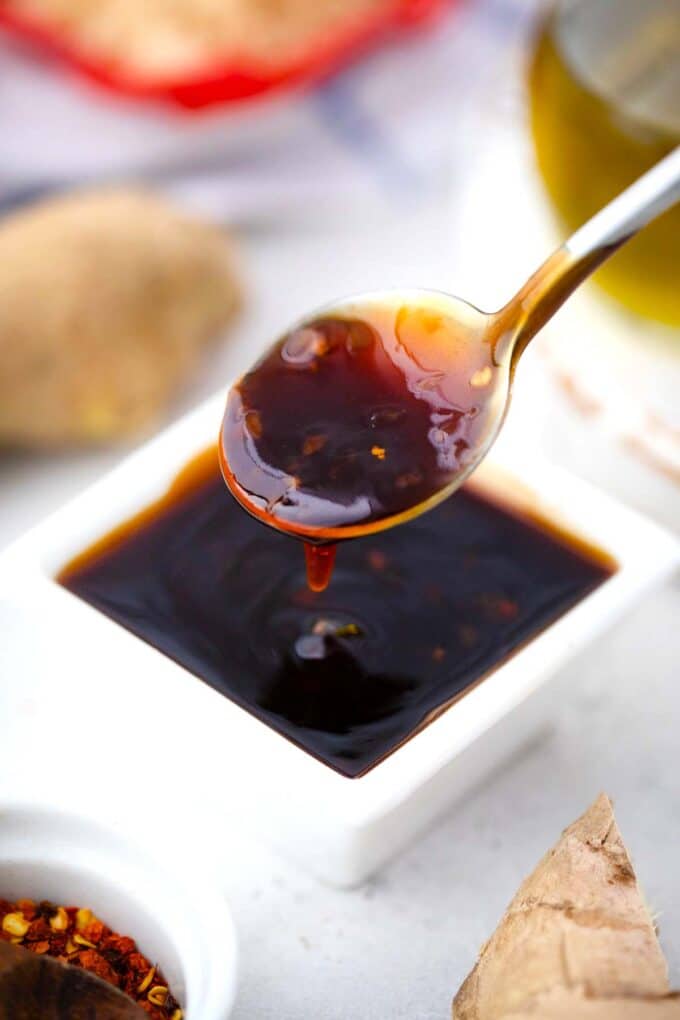
Why you will love this recipe
- So easy you’ll want to make it all the time: I can throw this sauce together in one pot using simple pantry staples like soy sauce, hoisin, rice vinegar, and fresh ginger. It takes just ten minutes and comes out perfect every time.
- Make it once, enjoy it again later: I often double the recipe and freeze some for later. It holds up great and makes dinner prep even faster the next time around.
- Way better than store-bought, no question: This homemade version has way more flavor than anything I’ve tried from a jar. It’s sweet, savory, a little spicy, and full of real ingredients like garlic, ginger, and brown sugar.
- One sauce, endless possibilities: I use it as a stir-fry sauce, a dip, or even a quick glaze for chicken or tofu.
What you will need
Over the years, I’ve loved eating at traditional Chinese restaurants in New York and New Jersey. Those experiences helped me understand how truly authentic Chinese recipes should taste, especially when it comes to sauces. To make this one at home, you’ll just need a few simple staples like:
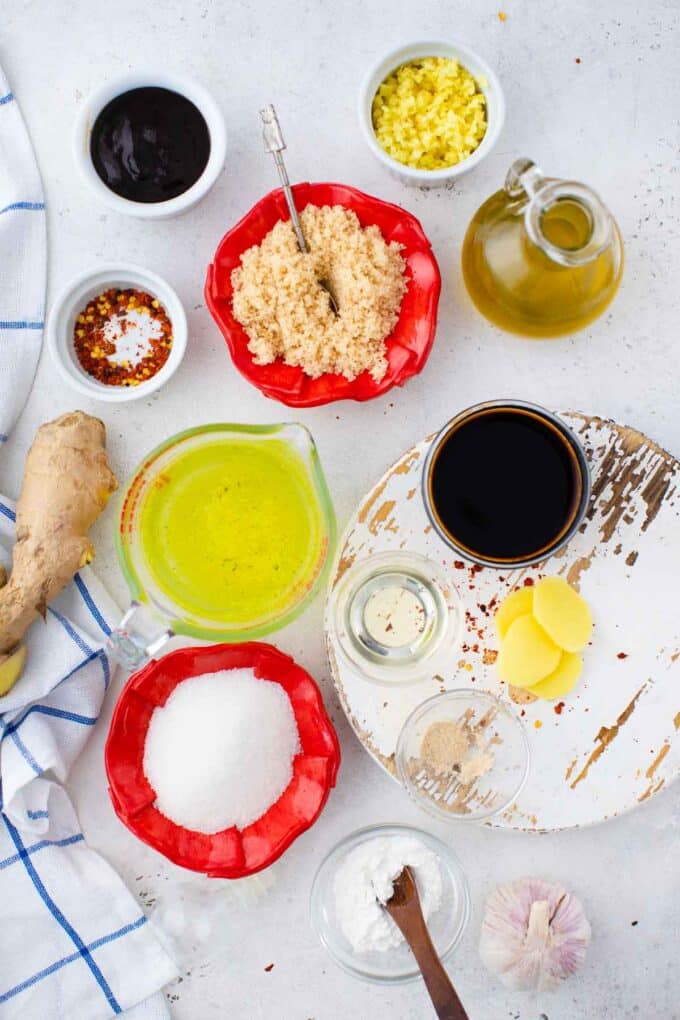
- Liquid base: I use a mix of rice vinegar, soy sauce, hoisin sauce, and low-sodium chicken broth to build the savory, tangy base of the sauce.
- Sweeteners: Both white and brown sugar go in to create that classic sweet and sticky balance that makes General Tso sauce so crave-worthy.
- Aromatics and spice: Minced ginger, garlic or garlic powder, and a pinch of red pepper flakes bring depth, and just the right amount of heat.
- Thickener: A little cornstarch is all it takes to thicken the sauce into that glossy, clingy texture.
How to make
Mix in all the sauce ingredients: This is truly one of the easiest recipes you’ll ever make, and trust me, it’s nearly impossible to mess up. I simply combine all the ingredients in a pot, no need to worry about the order. To help visualize, I’ve added an image below. Then, I cook it over medium-high heat for about 3 to 5 minutes, stirring constantly until the sauce thickens perfectly.
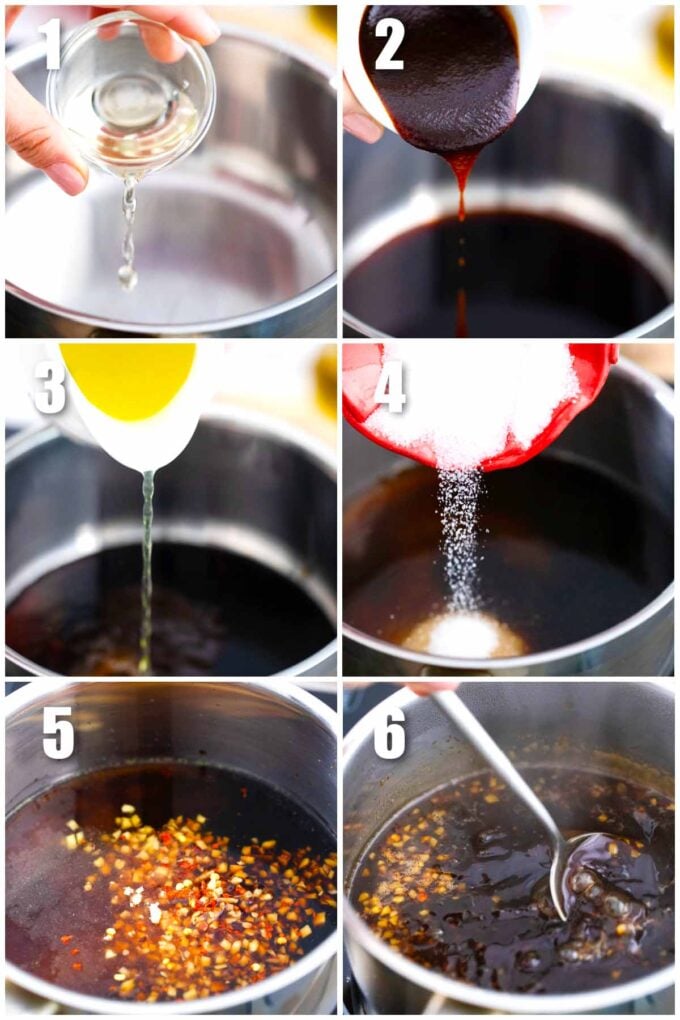
Thicken and serve: Let the sauce thicken for about 5 minutes, then remove it from the heat. You can use it right away, or if you’re not using it immediately, cool it thoroughly and store it in a clean container or jar for later use.
Expert tip
Fresh aromatics matter
When I first started making sauces at home, I realized the biggest difference between store-bought and homemade was the use of fresh aromatics. I always make sure to use fresh garlic, ginger, and green onions whenever I can. These ingredients instantly elevate the flavors, giving the sauce that sharp, vibrant kick you just don’t get from a jar.
More tips to consider:
- I always whisk the sauce ingredients well before cooking. This helps ensure everything blends smoothly and prevents lumps from forming when thickening with cornstarch.
- Hoisin sauce adds that authentic Chinese flavor to dishes, but if you don’t have it, you can mix barbecue sauce with Sriracha and a little Chinese five-spice powder. However, I highly recommend picking up hoisin, it’s used in so many Chinese recipes and lasts a year in the fridge.
- Not everyone loves garlic, so if you prefer a subtle flavor, go for garlic powder. But if you enjoy a stronger garlic kick, fresh minced garlic is the way to go.
- Chinkiang vinegar is a great alternative to rice vinegar if you want something with a deeper flavor. I like to use it in some of my recipes for a more complex taste.
Recipe variations
- Gluten-free option: Swap the soy sauce with tamari and use a gluten-free hoisin sauce. This way, you can enjoy all the flavor without worrying about gluten.
- Sugar alternatives: The sugar in my recipe can be replaced with 6 tablespoons of honey or agave. If you prefer sugar substitutes, you can use 6 tablespoons of erythritol or monk fruit sugar for a lower-carb option. These alternatives work just as well to sweeten the sauce without sacrificing flavor!
- Make it spicy: Want more heat? Add extra red pepper flakes or some chopped fresh chili to give the sauce an even spicier kick.
Serving suggestions
This sauce is incredibly versatile. I often use it in stir-fries with meat, veggies, or whatever I have on hand. It’s also fantastic as a dipping sauce for avocado egg rolls or drizzle it on top of my crispy tofu salad.
It works wonderfully as a marinade for chicken, pork, or beef. I highly recommend using it for baked chicken breasts, roasted pork loin, or even as a glaze for this homemade meatloaf, it adds so much flavor to everything!
How to store
- Refrigerator: Once refrigerated, you can use this up within two to three weeks.
- Freezer: If frozen, this can be kept for 3 months. This is especially helpful when you cook a larger batch and refrigerate portions in Ziploc bags to have on hand.
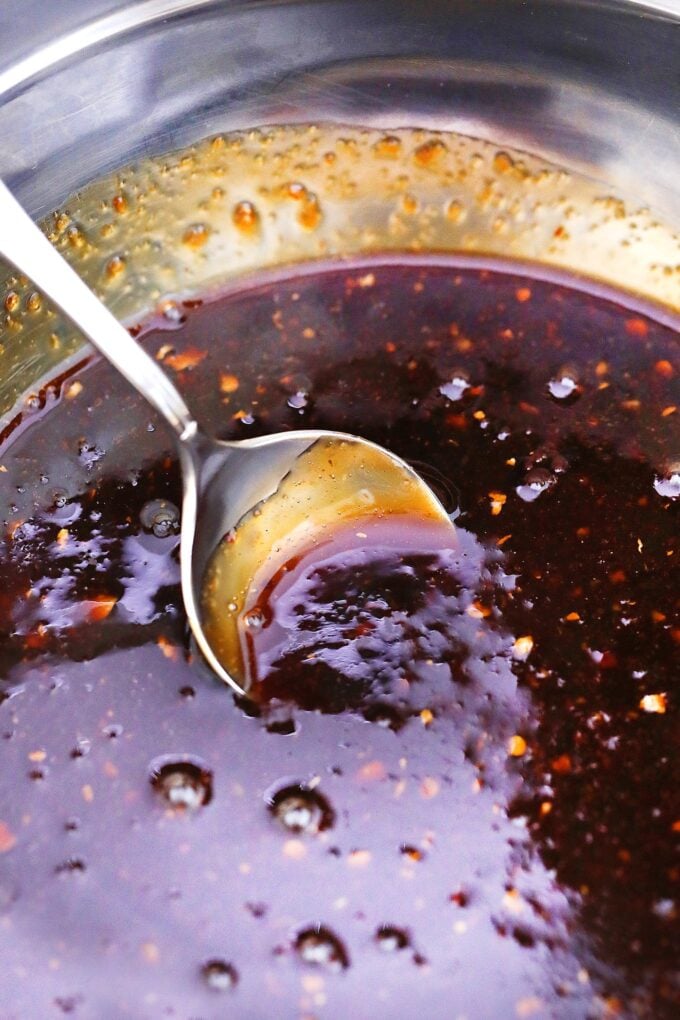
Frequently Asked Questions
It is used in the famous Chinese takeout dish, General Tso Chicken. It is named after a Chinese leader from the Qing dynasty, Zuo Zongtang, whose romanized name is Tso Tsungtang. History has it that a certain Chef Peng invented the dish and served it in his restaurant in Taiwan.
From this original recipe, the Chinese immigrants in the US developed the present-day recipe in the 1970s. The version that we know now is tweaked to please the American palate – a little bit sweeter than the original version which is hotter and of Hunanese influence.
It is the perfect and balanced combination of sweet and savory flavors. It has notes of sour, tangy, and mildly spicy all at once. The sauce has a sticky texture and tends to thicken when refrigerated. It goes hand in hand with crispy chicken and veggies, as served in General Tso Chicken.
That is the case when the sauce was not simmered enough, or a thickener like cornstrach slurry has not been used. I recommend, mixing about a teaspoon of cornstarch with two teaspoons of water, until fully dissolved, and add the mixture to the sauce. Simmer it for a few minutes, and repeat if needed. Keep in mind that the sauce will thicken more once it cools.
While both are sweet and savory sauces, and have some similarities, they are NOT the same. Each one possesses very distinctive features. General Tso Sauce leans more towards the savory palette, with an umami flavor from the Hoisin sauce that is not used in Sweet and Sour Sauce.
Sweet and sour sauce is a bit more acidic, sweeter, and not as spicy. Usually, it has some pineapple juice in the ingredient list, and the umami flavor comes from the Ketchup that is added.
They also look different visually, with the General Tso being darker and the other almost a bright red color.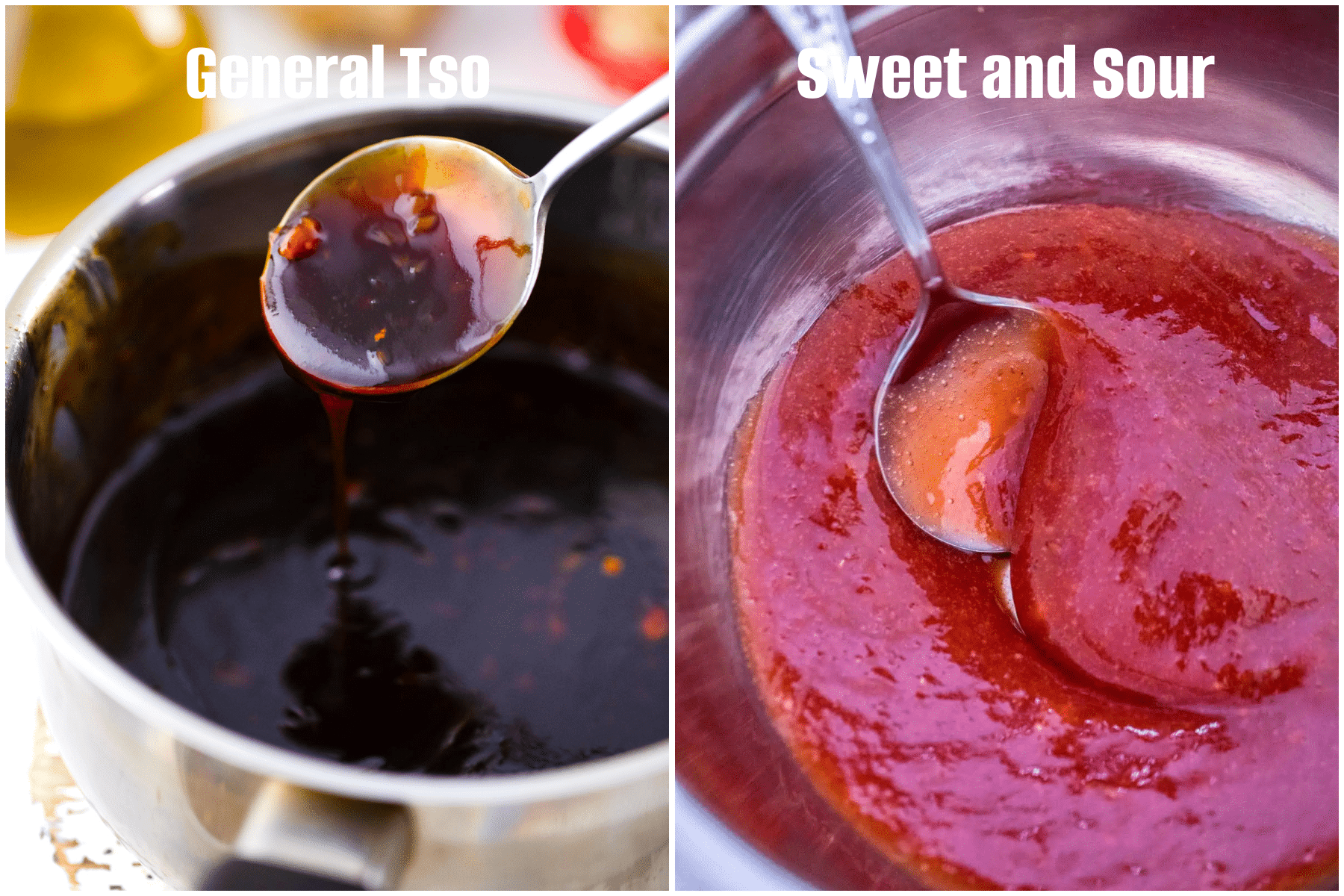
More Chinese sauce recipes:

Loved this recipe? I’d love to hear from you! 💛 Leave a 5-star rating ⭐️ in the recipe card below and share your thoughts in the comments – I read and appreciate every single one!
Let’s stay connected! Follow me on Facebook, Instagram, Pinterest, and YouTube for more delicious, sweet and savory recipes. Have a question? Ask in the comments, and I’ll be happy to help! 😊 with love Catalina!
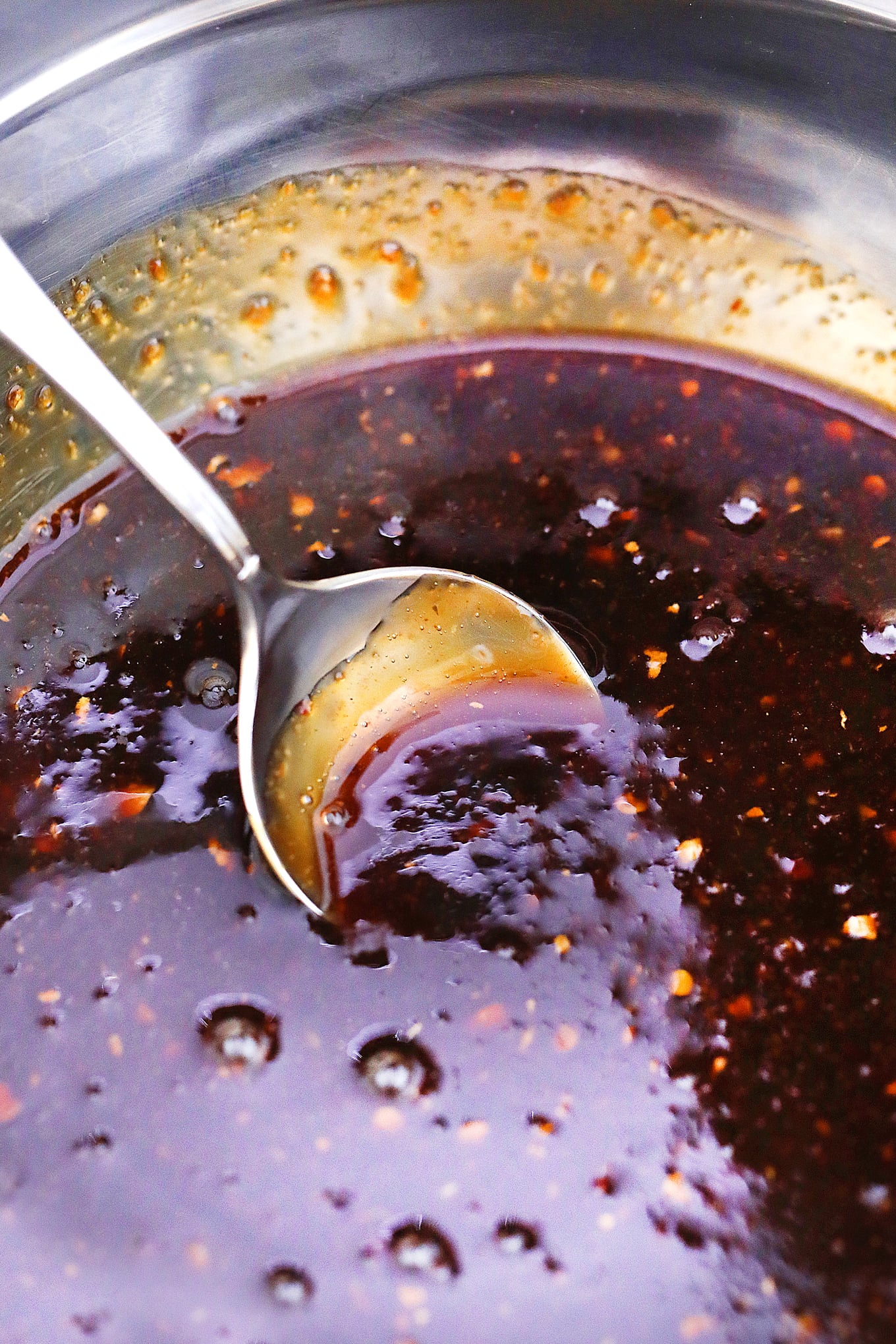
General Tso Sauce Recipe
Ingredients
- 3 teaspoons rice vinegar
- 1/4 cup soy sauce low sodium
- 2 tablespoons hoisin sauce
- 1/2 cup chicken broth low sodium
- 3 tablespoons white sugar
- 3 tablespoons brown sugar
- 1 teaspoon fresh ginger minced
- 1/2 teaspoon garlic powder
- 1/4 teaspoon red pepper flakes
- 1 tablespoon cornstarch
Instructions
- In a medium pot, add all the ingredients and whisk to combine. Place it over medium heat for 3-5 minutes until it starts to simmer.
- Continue to cook for 5 minutes, until the mixture begins to thicken. Once the sauce is thickened, remove from heat.
- Use immediately, or let cool and transfer to a jar or airtight container and refrigerate.
Video
Notes
Fresh Aromatics Matter
When I first started making sauces at home, I realized the biggest difference between store-bought and homemade was the use of fresh aromatics. I always make sure to use fresh garlic, ginger, and green onions whenever I can. These ingredients instantly elevate the flavors, giving the sauce that sharp, vibrant kick you just don’t get from a jar.More tips to consider:
- I always whisk the sauce ingredients well before cooking. This helps ensure everything blends smoothly and prevents lumps from forming when thickening with cornstarch.
- Hoisin sauce adds that authentic Chinese flavor to dishes, but if you don’t have it, you can mix barbecue sauce with Sriracha and a little Chinese five-spice powder. However, I highly recommend picking up hoisin, it’s used in so many Chinese recipes and lasts a year in the fridge.
- Not everyone loves garlic, so if you prefer a subtle flavor, go for garlic powder. But if you enjoy a stronger garlic kick, fresh minced garlic is the way to go.
- Chinkiang vinegar is a great alternative to rice vinegar if you want something with a deeper flavor. I like to use it in some of my recipes for a more complex taste.

